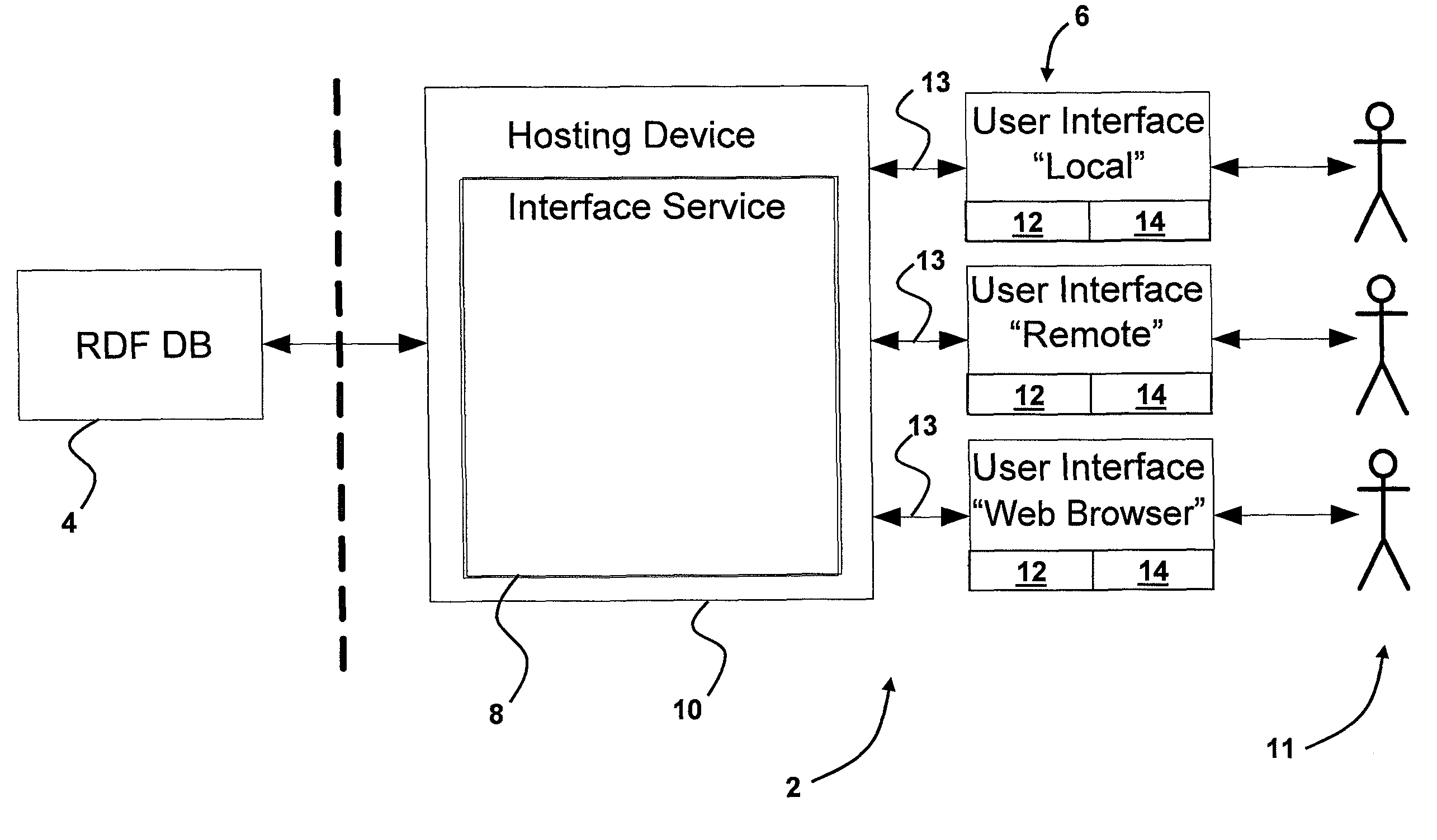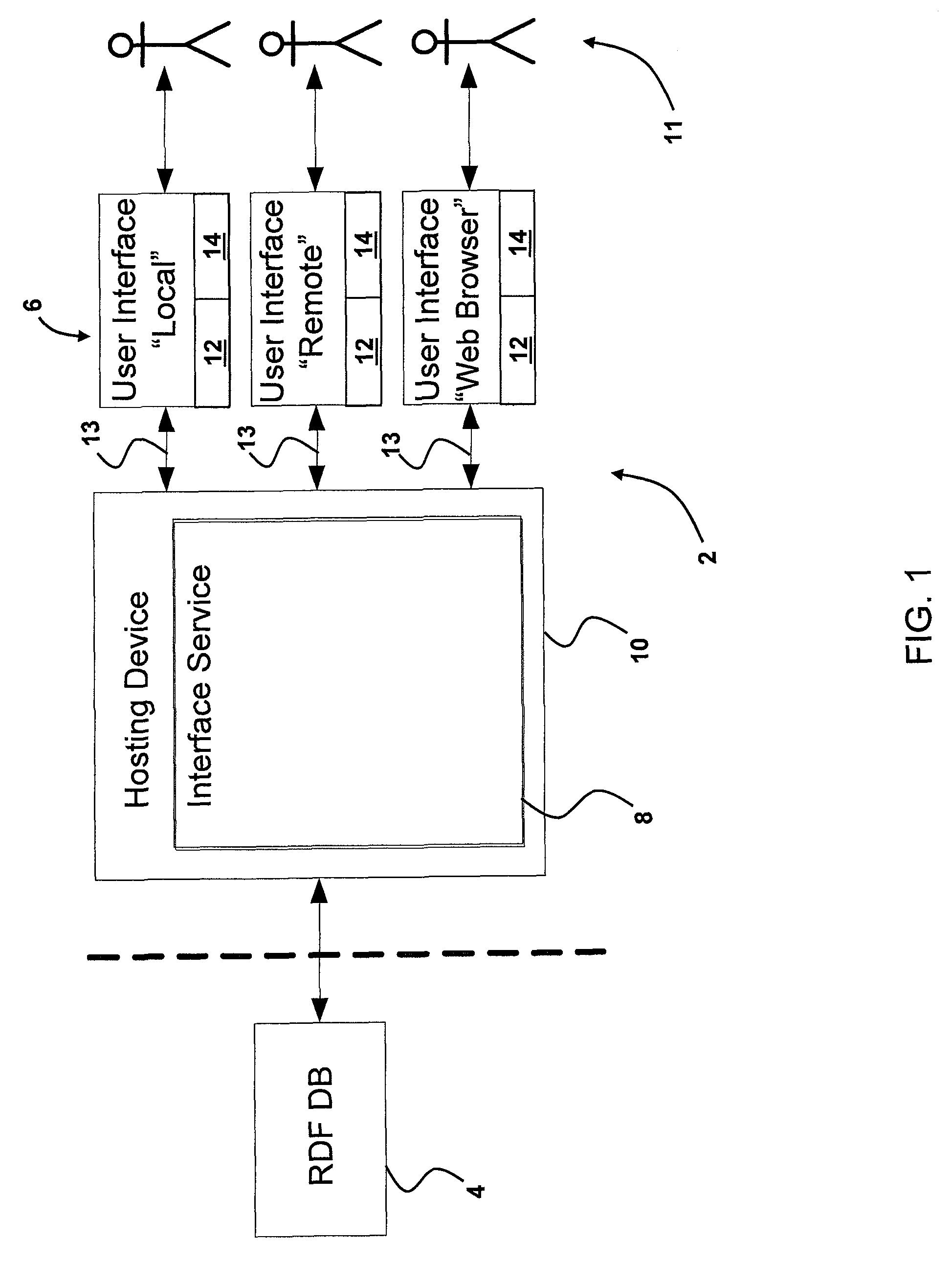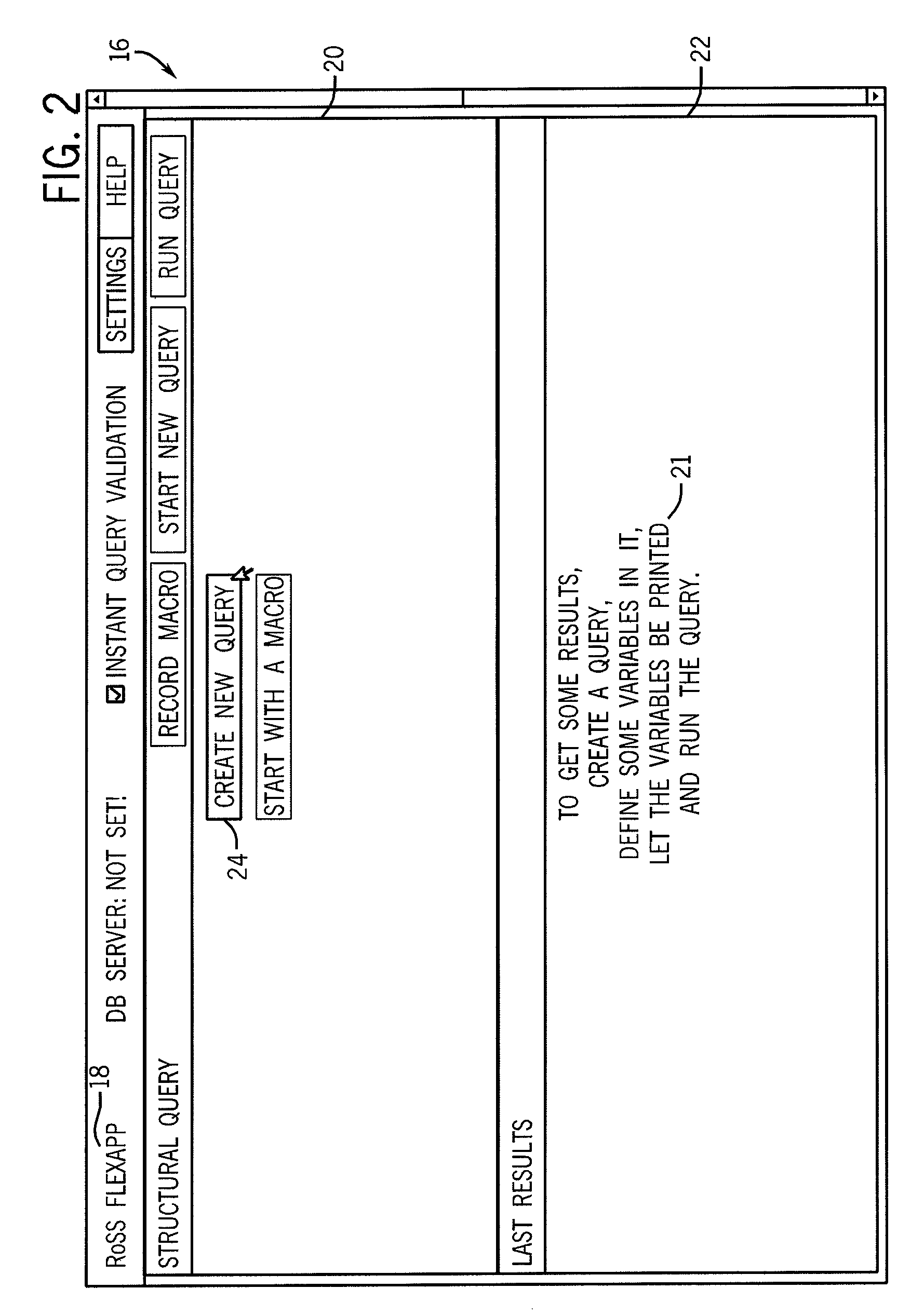User interface and methods for building structural queries
a user interface and structural query technology, applied in the field of user interface and method for building structural query, can solve the problem that search requests may continue to fail to produ
- Summary
- Abstract
- Description
- Claims
- Application Information
AI Technical Summary
Benefits of technology
Problems solved by technology
Method used
Image
Examples
Embodiment Construction
[0023]Referring to FIG. 1, exemplary user interface architecture 2 is depicted in communication with a database 4 (which in some embodiments can be multiple databases) containing structural data. The user interface architecture 2 includes one or more interface portals 6 (three being shown in this example) in communication with an interface service 8 (software application) which can for example run either as a stand-alone application on a hosting device 10 or as a web-service hosted by an application server. As a general overview, each user interface portal 6 can be operated by a respective user 11 to access the interface service 8 and build a formulated query. The formulated query includes one or more query elements, such as a class portion, wherein the class portion is populated by designating a concrete identifier or a special identifier. The class portion can be automatically populated with a default item. Relationships between two or more query elements can be expressed using de...
PUM
 Login to View More
Login to View More Abstract
Description
Claims
Application Information
 Login to View More
Login to View More - R&D
- Intellectual Property
- Life Sciences
- Materials
- Tech Scout
- Unparalleled Data Quality
- Higher Quality Content
- 60% Fewer Hallucinations
Browse by: Latest US Patents, China's latest patents, Technical Efficacy Thesaurus, Application Domain, Technology Topic, Popular Technical Reports.
© 2025 PatSnap. All rights reserved.Legal|Privacy policy|Modern Slavery Act Transparency Statement|Sitemap|About US| Contact US: help@patsnap.com



